Tokyo Photo Gallery 2017
January 2017

Challenge Sports! TOKYO event
On January 9, the hands-on sports event Challenge Sports! TOKYO was held at Tokyo International Forum. The event, which aimed to bring persons with or without impairments together to enjoy sports, bustled with attendees. It featured areas where visitors could try their hand at boccia, goalball, wheelchair basketball, football 5-a-side, and other sports. Mascots from various parts of Japan, including popular pear-like mascot Funassyi, also took part.
(January 9, 2017)
(January 9, 2017)
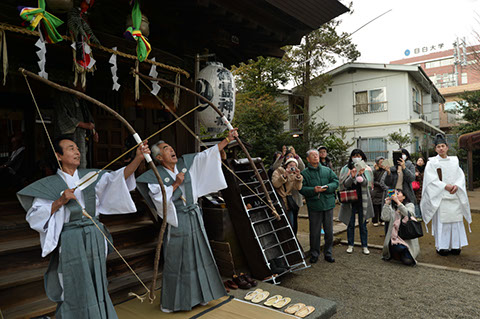
Bisha Matsuri at Nakai Goryo Shrine
On January 13, Bisha Matsuri took place at Nakai Goryo Shrine. In this Shinto ritual held every January, participants release arrows, making wishes for a good harvest. Bisha Matsuri has been designated by Shinjuku-ku as an intangible folk cultural property.
(January 13, 2017)
(January 13, 2017)
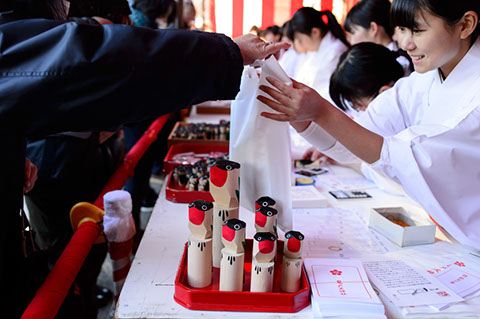
Usokae Shinji ritual at Kameido Tenjinsha Shrine
On January 24, Kameido Tenjinsha Shrine held the Shinto ritual of Usokae Shinji, which features the bullfinch, or uso in Japanese, a bird believed to bring luck. Every year, people visit the shrine to replace their old wood carved bullfinches with new ones, hoping that past bad luck will turn into a lie, which is also uso in Japanese. The Usokae Shinji ritual is also held at other shrines in Tokyo, such as Yushima Tenjin.
(January 24, 2017)
(January 24, 2017)

Opening ceremony of the relocated Tokyo Metropolitan Tama Library
On January 24, Governor Koike attended the opening ceremony of the relocated Tokyo Metropolitan Tama Library. Having moved from Tachikawa City to Kokubunji City, the library mainly features two services: the Tokyo Magazine Bank, which has approximately 17,000 magazine titles, one of the largest selections for a public library in Japan; and the Service Providing Materials for Children and Adolescents, which is aimed at encouraging young people to read more books. After the ceremony, the governor looked around the library, inspecting such facilities as the stacks, family-friendly accommodations (e.g. spacious restroom stalls that can accommodate strollers), Picture Books Area, digital signage displaying tourist information, and café.
(January 24, 2017)
(January 24, 2017)
February 2017
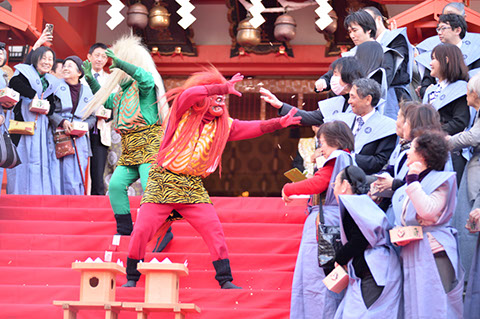
Setsubun Festival at Hanazono Shrine
A festival to celebrate Setsubun was held at Hanazono Shrine on February 3. “Setsubun” means “the change of seasons,” and is the day before the first day of spring and the new year in the traditional Japanese calendar. Setsubun festivals are held at temples and shrines around that time to pray that the coming year is full of good luck and free of calamities. The tradition of throwing beans to chase out the devil and welcome in luck has been carried out since the Muromachi period (1336 – 1573).
(February 3, 2017)
(February 3, 2017)
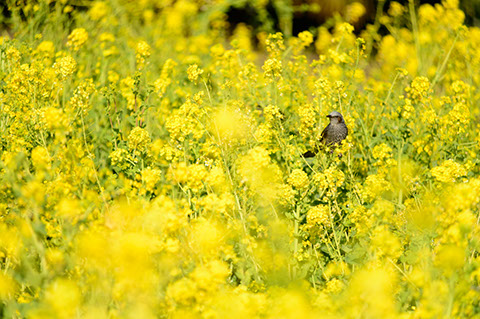
Field Mustard Blossoms in the Hamarikyu Gardens
On February 17, the blossoms of the field mustard reached their peak at the Hamarikyu Gardens. The carpet of around 300,000 yellow flowers in full bloom was an early sign of spring. The Hamarikyu Gardens is a leading example of a daimyo garden from the Edo period, with a tidal pond and two duck blinds for hunting. In December 1948, the gardens were designated as a Place of Scenic Beauty and as a Historic Site by the national government. In November of 1952, the site and surrounding water were designated as Special Places of Scenic Beauty and Special Historic Sites.
(February 17, 2017)
(February 17, 2017)
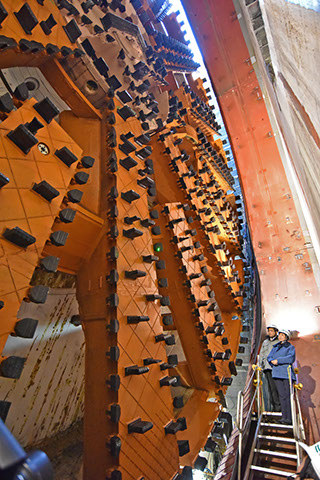
Governor Attends Tunneling Shield Launch Ceremony
On February 19, Governor Koike attended a ceremony to launch the tunneling shield for excavating a section of the Tokyo Gaikan Expressway, connecting the Kan-Etsu and Tomei expressway. Viewing the tunneling shield, the governor said that she was able to gain a real sense of the conditions and then stated, “The shield method is at the cutting edge of Japanese technology. I believe it supports increased productivity and stronger international competitiveness.”
(February 19, 2017)
(February 19, 2017)
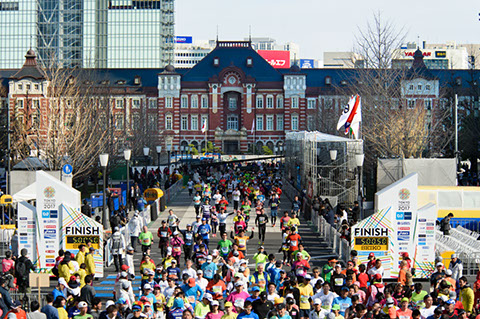
Tokyo Marathon 2017
On February 26, Tokyo Marathon 2017 was held. This is the 11th time the event has taken place since it started in 2007. This year’s marathon course was changed from previous years from the perspective of two points: stronger promotion of Tokyo’s appeal to those within and outside of Japan, and creation of a faster course that would allow runners to set records. The runners started at the Tokyo Metropolitan Government building, racing through Iidabashi, Kanda, Nihombashi, Asakusa Kaminari-mon, Ryogoku, Monzen-nakacho, Ginza, Takanawa, and Hibiya before reaching the goal at Gyoko-dori Avenue, against the backdrop of the Tokyo Station Marunouchi Station Building.
(February 26, 2017)
(February 26, 2017)
March 2017
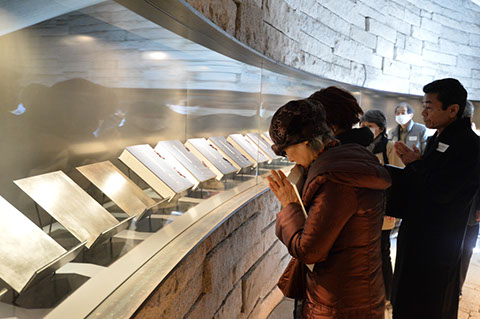
The ceremony to house the List of Names of Victims of the Tokyo Air Raids in the Peace Monument
On March 3, a ceremony was held to place the List of Names of Victims of the Tokyo Air Raids in the Peace Monument to Remember Victims of the Tokyo Air Raids in Yokoamicho Park. The list contains the names of those who lost their lives in the Tokyo air raids during World War II. This is a project that has been implemented by the Tokyo Metropolitan Government since fiscal 1999. As of March 2016, about 80,000 names have been listed.
(March 3, 2017)
(March 3, 2017)
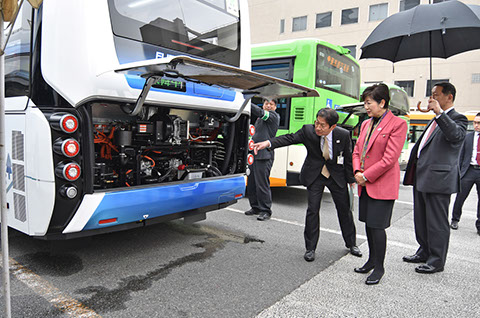
Governor visits Toei facilities
On March 6, Governor Koike inspected facilities related to the Bureau of Transportation. The governor first visited the Fukagawa Bus Depot of the Toei Bus. After being briefed on the bus depot and maintenance facility, an overview on fuel cell buses, and the external power supply system, she took a test ride on an actual fuel cell bus, which was scheduled to go into service, and moved to the Tokyo Ariake Iwatani Hydrogen Station, where she received an explanation on hydrogen fueling facilities.
(March 6, 2017)
(March 6, 2017)
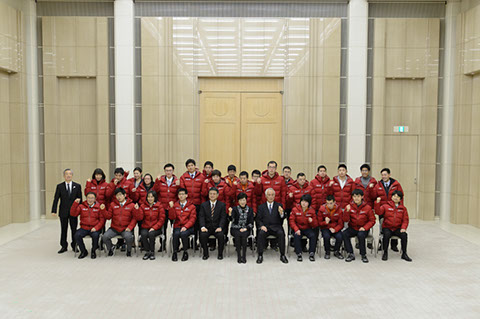
The Japan team of the Special Olympics World Winter Games in Austria pays a courtesy call on the governor
On March 9, the Japanese delegation to the Special Olympics World Winter Games in Austria (Special Olympics Nippon Tokyo) paid a courtesy call on Governor Koike. Governor cheered on the Japanese athletes saying, “I would like you to demonstrate 120 percent the results of your daily practice and bring back medals to Japan.”
(March 9, 2017)
(March 9, 2017)

The 27th Tokyo Metropolitan Peace Day Memorial Event
On March 10, the 27th Tokyo Metropolitan Peace Day Memorial Event was held at the 5th floor hall of the Tokyo Metropolitan Government Building No. 1. The Tokyo Metropolitan Government enacted the Ordinance on the Tokyo Metropolitan Peace Day in July 1990 and set March 10 as the Tokyo Metropolitan Peace Day, with a pledge that the horrors of war would never be repeated. This year, about 500 people, including survivors and families of the victims of the Tokyo air raids attended the memorial event to remember those who perished in the bombings.
(March 10, 2017)
(March 10, 2017)
April 2017
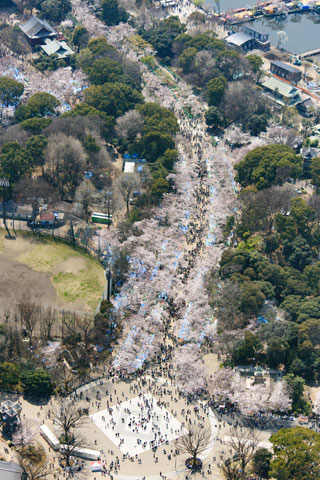
Cherry blossoms in Ueno Park
On April 5, Ueno Park was bustling with visitors flocking to see the cherry blossoms in full bloom. This aerial photo shows Takenodai Plaza in the foreground and Kiyomizu-Kannon-Do Hall of Kaneiji Temple in the back.
(April 5, 2017)
(April 5, 2017)
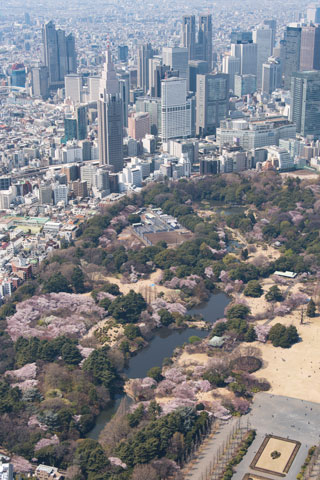
Cherry blossoms in Shinjuku Gyoen National Garden
On April 5, cherry blossoms at Shinjuku Gyoen National Garden were at their peak. The cherry trees in the garden began blooming five days earlier than usual, but with many cold days following, blossoms were enjoyed for a longer period this year. In this aerial photo Shinjuku Gyoen National Garden is in the foreground, and Shinjuku’s skyscraper district is in the back.
(April 5, 2017)
(April 5, 2017)
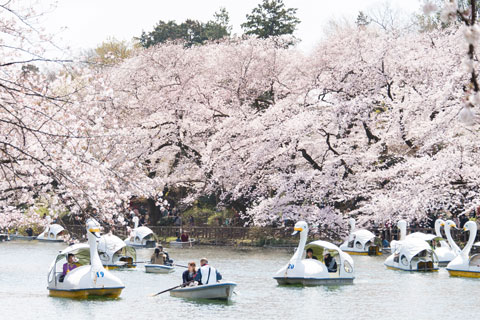
Cherry blossoms in Inokashira Park
On April 6, many people were enjoying the cherry blossoms in full bloom from boats on the pond at Inokashira Park. The park is known as one of the best spots in Tokyo to view cherry blossoms. Some 500 cherry trees are planted in the park, with about 250 Someiyoshino and Yamazakura cherry trees around Inokashira Pond. Inokashira Park opened on May 1, 1917 as the first suburban park in Japan, and celebrated its 100th anniversary this year.
(April 6, 2017)
(April 6, 2017)
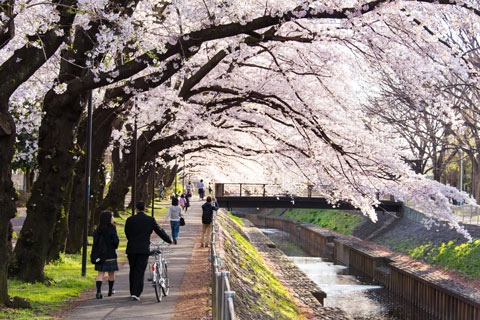
Cherry trees in Zenpukujigawa Green Park
On April 7, some 700 cherry trees in Zenpukujigawa Green Park were in full bloom, drawing large crowds of people to the rows of the cherry trees blossoming along Zenpukuji River. The cherry trees are each about 40 years old. Zenpukujigawa Green Park is the perfect park to stroll around and enjoy the seasonally changing landscape, from the spring cherry blossoms to the red autumn leaves.
(April 7, 2017)
(April 7, 2017)
May 2017
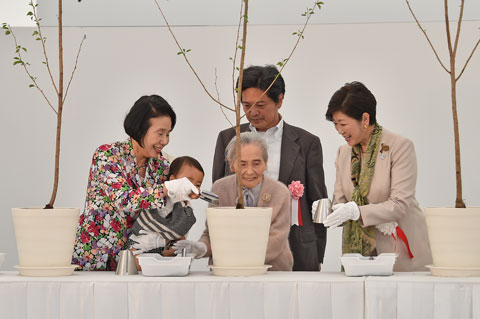
Ceremony held to celebrate Inokashira Park’s 100th anniversary
On May 1, Governor Koike attended a ceremony marking Inokashira Park’s 100th anniversary. Inokashira Park, a Tokyo Metropolitan Park located in the cities of Musashino and Mitaka, was developed as Japan’s first suburban park, opening on May 1, 1917. This year marks the park’s 100th year. At the ceremony, Edohigan cherry trees were planted in honor of the occasion by 100-year-old residents of Musashino and Mitaka cities and others, and children from both cities declared their commitment to value and protect the park.
(May 1, 2017)
(May 1, 2017)
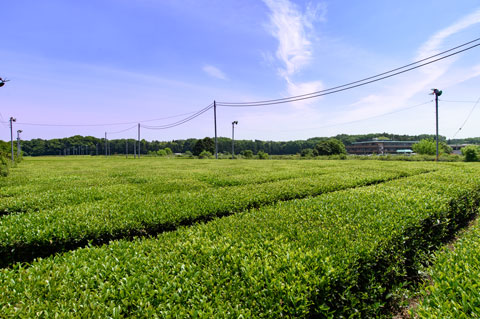
Tokyo Sayama tea harvesting begins
On May 12, harvesting of Tokyo Sayama shincha, the first flush of tea, began in Mizuho-machi. The area, which runs along the border with Saitama prefecture from Musashimurayama-shi to Mizuho-machi and Higashiyamato-shi, has been known for its tea since the Edo period. Although the variety of tea grown is Sayama tea, named for the city in Saitama prefecture where it originates, tea grown on the Tokyo side was given the name Tokyo Sayama in the mid-Showa era to distinguish it from that produced in Saitama. Tea is picked twice a year in the spring and summer. This is fewer times a year than other tea producing areas in Japan. Therefore, it is said the flavor of the tea is that much richer.
(May 12, 2017)
(May 12, 2017)

Showa Kinen Park Flower Festival 2017
On May 16, Showa Kinen Park was alive with many visitors to the Flower Festival 2017 event being held at the park. The festival offers visitors the chance to enjoy fields of tulips, shirley poppies, nemophila, and other flowers set up at several locations within the park. At Flower Hill, one of the park’s photo spots, visitors expressed amazement as they gazed upon a carpet of red and pink shirley poppies in full bloom.
(May 16, 2017)
(May 16, 2017)
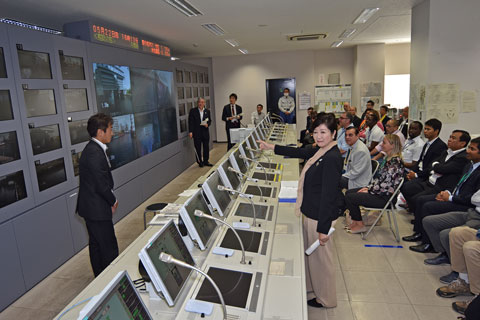
Governor tours the TMG Floodgate Control Center
On May 22, Governor Koike toured the TMG Flood Gate Control Center. Facilities such as floodgates, sluice facilities, and pumping stations are remotely monitored and controlled 24 hours a day at the center. In addition to observing how displays are used to monitor facilities from the center, the governor also experienced operating a floodgate remotely. The governor offered her thoughts after the tour, saying, “As we work to ensure the safety of Tokyo’s waterfront, one of the city’s treasures, I hope to apply what I have learned today when considering how to best use these areas.”
(May 22, 2017)
(May 22, 2017)
June 2017

Japanese irises at Koiwa Iris Garden in full bloom
On June 16, irises at the Koiwa Iris Garden were in full bloom. The Koiwa Iris Garden is located along the Edogawa River right near Edogawa Station on the Keisei Line. Edogawa-ku used Japanese irises donated by a local resident to make this strolling garden. From May through June, 50,000 Japanese irises planted at the park blossom in full glory. The park has become a popular urban oasis in Tokyo.
(June 16, 2017)
(June 16, 2017)
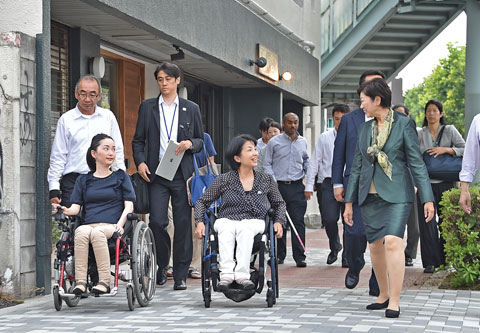
Governor inspects sidewalks subject to barrier-free measures
On June 20, Governor Koike observed the situation of sidewalks subject to barrier-free measures with Aki Taguchi, Director of the Paralympians Association of Japan, and guest members. The governor inspected the sidewalks of Shin-mejiro-dori Avenue around Shimo-ochiai 2-chome, Shinjuku-ku, where removal of barriers is scheduled, and Mejiro-dori Avenue around Ehara-cho 1-chome, Nakano-ku, where such work has been completed. The governor confirmed the impact that different levels between the sidewalks and roads have on accessibility and the challenges to be addressed.
(June 20, 2017)
(June 20, 2017)
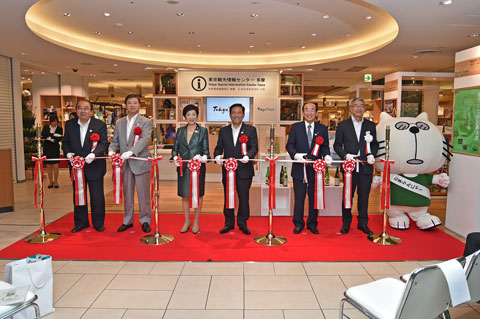
Tokyo Tourist Information Center Tama opening ceremony
On June 20, Governor Koike attended the opening ceremony for Tokyo Tourist Information Center Tama. This first Tokyo Tourist Information Center to open in the Tama area is located in the shopping complex of JR Tachikawa Station. Services offered at the center include brochures, videos, and others that showcase the Tama area’s sightseeing spots, introduction to local specialties, information on public transportation, and free WiFi service. Through these services, travelers are provided with detailed information on the region. The staff speak Japanese, English, Chinese, and Korean.
(June 20, 2017)
(June 20, 2017)
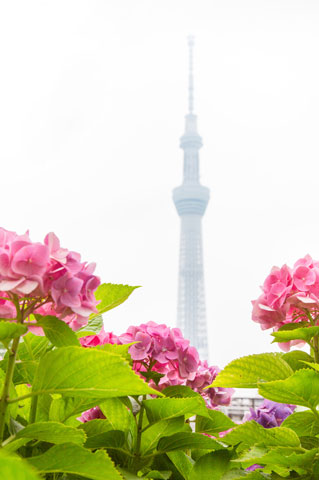
Hydrangeas and Tokyo Skytree
On June 29, hydrangea flowers of Ajisai Road in Sumida Park were in full glory. Visitors to this park along the Sumida River in Taito-ku can enjoy various types of hydrangeas, such as Sumidanohanabi, Honajisai, Uzuajisai, and Annabelle, together with the landmark Tokyo Skytree. It is said that Sumidanohanabi was named so because its shape resembles the fireworks of Sumida River Fireworks Festival.
(June 29, 2017)
(June 29, 2017)
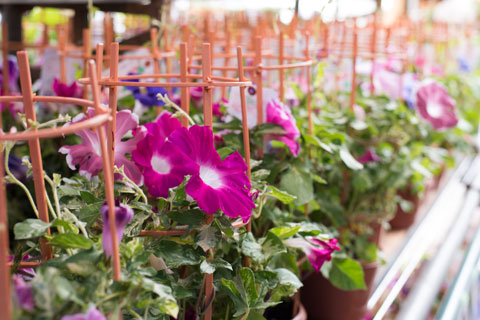
Iriya Morning Glory Festival
On July 6, the Iriya Morning Glory Festival (Iriya Asagao Matsuri) was bustling from early in the morning. This festival is held for three days from July 6 through 8 every year. Centering on Iriya-Kishimojin (Shingen-ji Temple), around 60 morning glory vendors and 80 fair stalls open along the Kototoi-dori Street. Each year, there is a large turnout of as many as 400,000 visitors. Admiring the colorful morning glories, visitors can enjoy a Japanese summer tradition dating back to the Edo period.
(July 6, 2017)
(July 6, 2017)
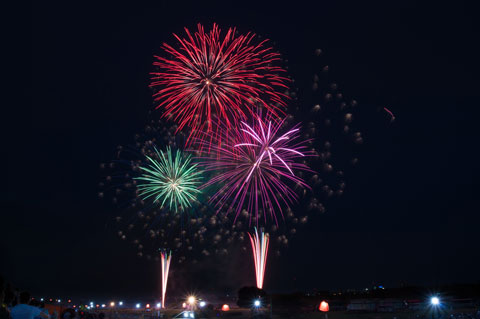
The 51st Katsushika Fireworks Festival
On July 25, the 51st Katsushika Fireworks Festival was held around the Edogawa River. About 13,000 fireworks lit up the summer night sky. Included in the fireworks display were those launched in rhythm with the publicity talk by the Katsushika tourism ambassador, huge 120-meter wide fireworks configured in the thick eyebrows of a character from a popular Japanese manga set in Katsushika, and the elaborate fireworks that came in first in the Hanabi World Cup in Huis Ten Bosch in 2016.
(July 25, 2017)
(July 25, 2017)

Governor attends the National Governors’ Conference
On July 27 and 28, Governor Koike attended the National Governors’ Conference held in Iwate Prefecture. This time, the conference theme was “From Isolated Society to Inclusive Society—Changing Japan from a Local Scale.” At the opening of the meeting, Governor Yamada of Kyoto Prefecture, who serves as the President of the National Governors’ Association, said, “It is time to return to a world of coexistence rather than isolation. Coexistence is the most important principle for local governments,” and called out, “Let’s change Japan from a local scale.”
(July 27, 2017)
(July 27, 2017)
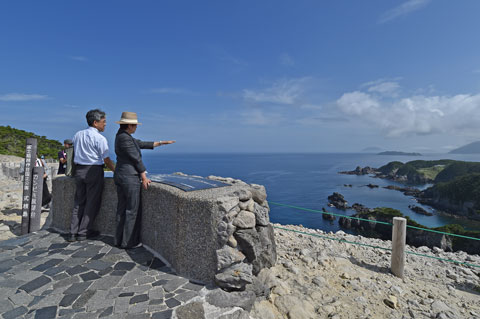
Governor’s visit to Niijima-mura (Shikinejima)
On July 29, Governor Koike visited the island of Shikine, which is under the jurisdiction of Niijima Village, Tokyo. The governor first visited Kanbiki View Point on the island and enjoyed the vista selected as one of the new one hundred famous views of Tokyo. Next, she went to the Shikinejima Development Center, where she was briefed on the “island treasures” such as its natural hot springs and had the opportunity to speak with the islanders.
(July 29, 2017)
(July 29, 2017)
August 2017
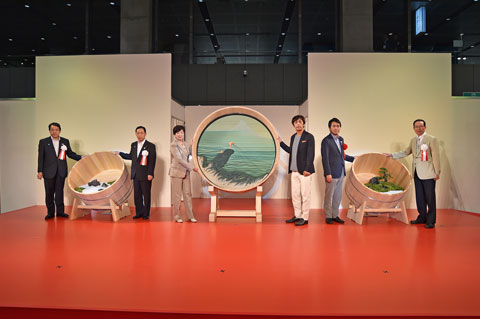
Monozukuri/Takumi no Waza Expo 2017
On August 9, the opening event for the Monozukuri/Takumi no Waza Expo 2017 was held at Tokyo International Forum. Under the theme of tradition and innovation, the Expo was held for three days until August 11 to showcase the traditional craftsmanship that has supported Japan and the wonders of cutting-edge manufacturing technology. Around 80 organizations from Tokyo and other parts of Japan that are carrying on Japan’s tradition of craftsmanship opened booths at the“i (clothing),”“shoku (food),” "ju (building),”“kou (manufacturing),” and “Tokyo traditional crafts” zone and the “national crafts” zone to introduce their masterpieces and hold demonstrations.
(August 9, 2017)
(August 9, 2017)
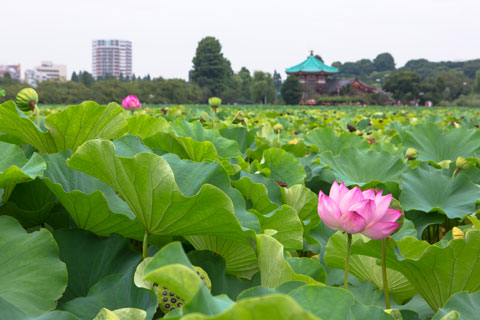
Shinobazu Pond lotus flowers, Ueno Park
On August 25, the lotus flowers of Shinobazu Pond at Ueno Park were in full bloom. Shinobazu Pond is a famous site for lotuses; it was even included in Edo period ukiyo-e woodblock prints. During WWII, the pond was filled in and turned into a rice paddy, but after the war, reconstruction began and in the 1950s to early 1960s the pond was restored. The lotuses start to bloom in mid-July every year, and are a popular summer sight.
(August 25, 2017)
(August 25, 2017)
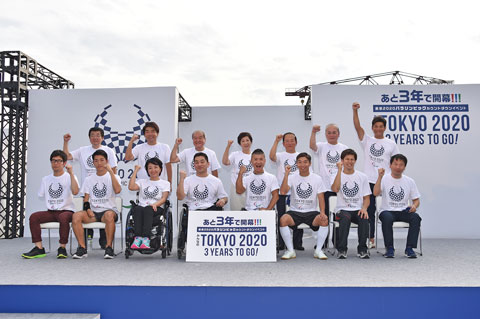
3 Years to Go to the Tokyo 2020 Paralympics Games
On August 25, exactly three years before the start of the Tokyo 2020 Paralympic Games, a countdown event, “3 Years to Go to the Tokyo 2020 Paralympics Games,” was held at a commercial facility in Toyosu, Koto-ku. In her greetings at the opening ceremony, Governor Koike said, “As you all envision Tokyo three years from now, let us align our goals and let’s do our best with everyone throughout Japan to make these Games amazing.”
(August 25, 2017)
(August 25, 2017)
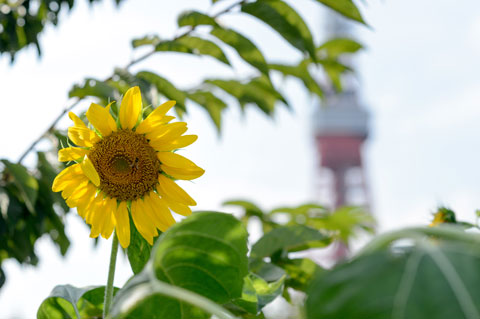
Shiba Park sunflowers in bloom
On August 28, the sunflowers in Shiba Park near Tokyo Tower were in bloom. In August, Tokyo had 21 continuous days of rainfall, resulting in a summer with much less sunlight than usual, delaying the growth of the crops. On one of these few summery days, large sunflowers rose magnificently near Tokyo Tower.
(August 28, 2017)
(August 28, 2017)
September 2017
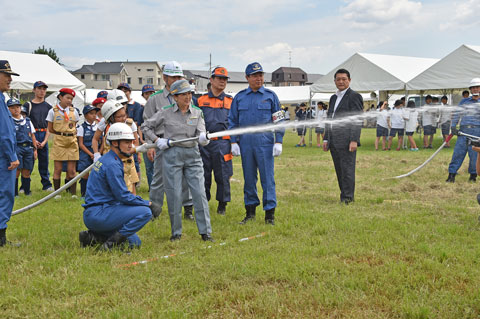
Tokyo-Chofu Comprehensive Joint Disaster Management Drill in 2017
On September 3, the Tokyo Metropolitan Government (TMG) and Chofu City held a comprehensive joint disaster management drill with the participation of Governor Koike. The drill was based on a scenario of a very strong magnitude 7.3 earthquake directly striking the Tama area at around 8:00 a.m. As a result, quakes of an intensity of at least 6-lower on the Japanese seismic scale of 7 were widely registered across the Tama area. In the area around Chofu City, a tremblor measuring 6-upper was recorded. The exercise assumed that the damage was especially serious in Chofu City and the South Tama area. The drill took place around Chofu City’s Tama River Children’s Park. Many local residents took part in the hands-on training aimed at strengthening coordination between the TMG, municipalities, and disaster response organizations in the event of an earthquake and enhancing the disaster preparedness of communities based on the spirit of self-help and mutual support.
(September 3, 2017)
(September 3, 2017)

Governor visits a centenarian
On September 8, Governor Koike visited a Fuchu City resident, Ms. Suzuko Ichinomiya, in her home. Ms. Ichinomiya was born in 1917 and celebrates her 100th birthday in November. When the governor presented her with Edo kiriko glassware and a congratulatory letter, Ms. Ichinomiya said, “I will try very hard to stay healthy a little bit longer.” While looking at a photo album of her childhood, they had a friendly talk centering on her memory of attending the opening ceremony of the Tokyo 1964 Olympic Games.
(September 8, 2017)
(September 8, 2017)
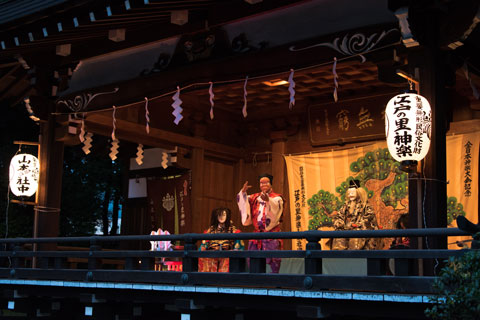
Okunitama-jinja Shrine autumn/chestnut festival
On September 28, the autumn festival was held at Okunitama-jinja Shrine. The origin of the historical event can be traced back to a dai-dai kagura dance for the gods performed at the Musashi Sosha Rokushogu Shrine on September 28, 1738. It was temporarily discontinued but started again and continues to be held to date. The festival is also called “chestnut festival.” The land of the Musashino region was suited to grow chestnuts, which were deemed valuable as preserved food. As the chestnuts were of high quality, people began to present them to the Tokugawa Clan. As the periods of chestnut harvesting and the grand kagura dance performance overlapped, the festival came to be known as a “chestnut festival.”
(September 28, 2017)
(September 28, 2017)
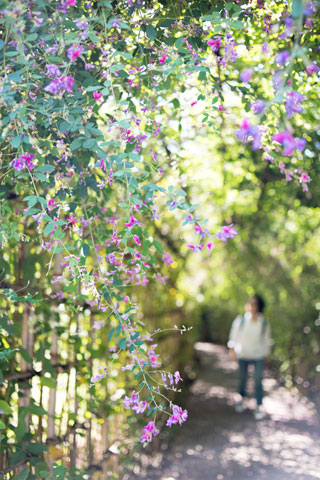
Hagi tunnel at its best
On September 29, a tunnel of hagi (bush clover) at the Mukojima Hyakkaen Gardens was in full glory. Mukojima Hyakkaen is a historical garden built in the Bunka-Bunsei period (1804–1830) when the merchant culture flourished in Edo. The “hagi festival” is held every year when the blooming hagi is at its peak. The some 30-meter-long bush clover tunnel is a famous spot in the garden.
(September 29, 2017)
(September 29, 2017)
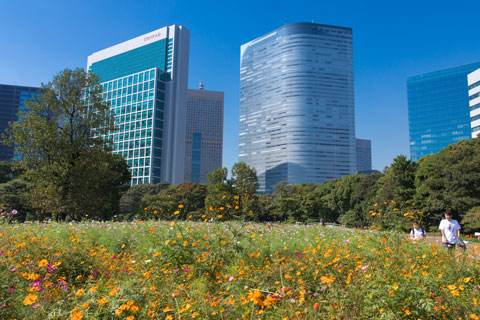
Cosmos in the Hamarikyu Gardens
On October 10, visitors admired the cosmos in full bloom under clear blue skies at Hamarikyu Gardens. Some 300,000 Cosmos sulphureus, or orange cosmos, are planted in the flower field of this leading example of an Edo-period daimyo garden. The park has a tidal pond and two duck-hunting grounds. Under the Act on Protection of Cultural Properties, in December 1948, the gardens were designated as a national Place of Scenic Beauty and Historic Site; in November 1952, the gardens and surrounding waters were designated as a Special Place of Scenic Beauty and Special Historic Site.
(October 10, 2017)
(October 10, 2017)
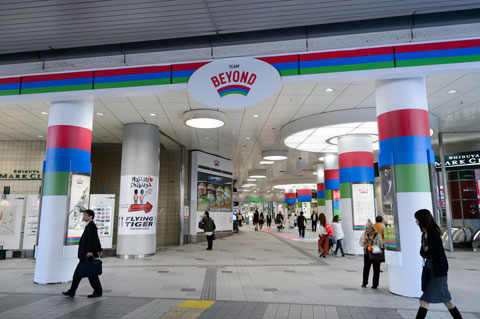
“BEYOND FES” held in Shibuya
On October 26, BEYOND FES Shibuya was held as part of the TEAM BEYOND project, which aims to expand the support base for Paralympic sports. The program included the TEAM BEYOND Stage, providing a talk show and opportunities to experience parasports to convey the attractions and power of parasports, and the BEYOND AWARD 2017, which awarded works such as music and films that conveyed the appeal of parasports from various angles. The event runs from October 20 to November 11.
(October 26, 2017)
(October 26, 2017)
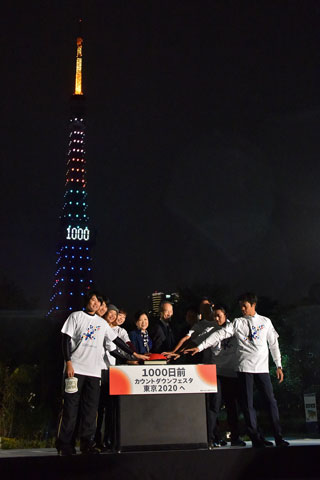
Tokyo Tower illuminated in the five Olympic colors
On October 28, Governor Koike attended an official Tokyo 2020 Games program, the 1,000 Days to Go Countdown Festa–To Tokyo 2020. At the event, a 1000 Days to Go! Special Diamond Veil light up ceremony was held to illuminate Tokyo Tower in the five Olympic colors. The number “1000” appeared at the height of the Main Observatory to mark the 1000-day milestone.
(October 28, 2017)
(October 28, 2017)
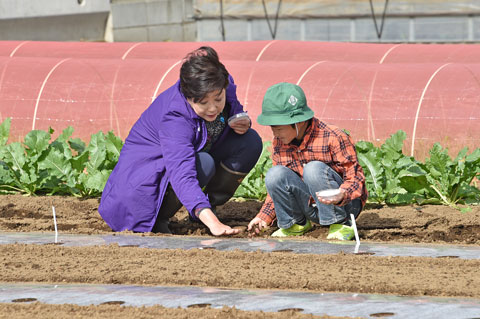
PR event for Edo-Tokyo vegetables held
On October 31, a PR event for Edo-Tokyo vegetables took place at a farm in Nerima-ku. Its goal was to promote healthy eating as well as to publicize and further advance understanding on the traditional vegetables. Focusing on Nerima Daikon radish, a well-known Edo Tokyo vegetable, it was organized as a “seed-planting exchange event” for local producers and elementary school children.
(October 31, 2017)
(October 31, 2017)
November 2017

The 46th Tokyo Agriculture Festival
On November 2, the 46th Tokyo Agriculture Festival was held in an open space in front of the Meiji Jingu Shrine’s Homotsuden (Treasure Museum). Governor Koike participated in the event. The festival was started by the metropolitan government to widely introduce Tokyo’s agriculture to its citizens and for farmers in Tokyo to compete on their agricultural techniques. During the festival, vegetables grown by farmers in Tokyo were displayed, vegetables, flowers, and other produce were sold, food stalls serving meals cooked with these ingredients were set up, and folk art was performed on stage, enveloping the event in a festive mood.
November 2, 2017
November 2, 2017
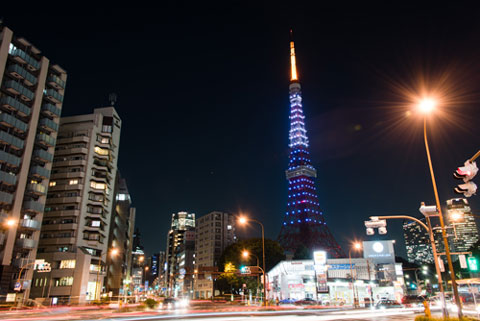
Tokyo Tower lit up in the official New York City flag colors
On November 10, Tokyo and New York City (NYC) signed an official tourism partnership aimed at boosting travel between the two cities. Fred Dixon, President and CEO of NYC & Company, described the partnership agreement as very encouraging, and went on to explain activities to promote NYC in Japan, including illumination of the Tokyo Tower in orange, white and blue—the three official flag colors of the Big Apple—and talked about the appeals of the city.
November 10, 2017
November 10, 2017
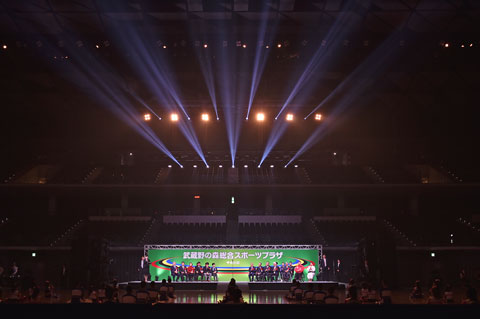
Opening event of the Musashino Forest Sport Plaza
On November 25, the opening event of the Musashino Forest Sport Plaza in Chofu City took place. This metropolitan sports facility forms a new center of sport in the Tama Area and is the first new permanent venue of the Tokyo 2020 Games to be completed. In it you find the Main Arena able to seat more than 10,000 spectators, the Sub-Arena, which turns into a dojo or martial arts hall by setting up tatami mats, and an indoor swimming pool with eight 50-meter lanes. Additional facilities, such as a training room (gym) and multi-purpose space, are also provided. The plaza is slated to be used as a venue for Badminton, Fencing, and Wheelchair Basketball during the Tokyo 2020 Games.
November 25, 2017
November 25, 2017
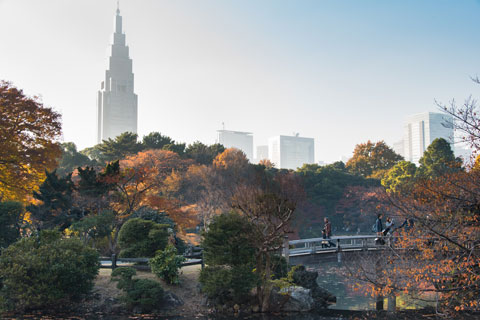
Autumnal foliage in Shinjuku Gyoen National Garden
On November 29, the Shinjuku Gyoen National Garden was bustling with people looking to catch the best view of the autumn colored leaves. The Shinjuku Gyoen, an ingenious mix of the English landscape garden, French formal garden, and Japanese garden, is one of the most famous modern western-style gardens in Japan. In autumn, visitors can enjoy the changing colors of maple, ginkgo, bald cypress, sycamore, zelkova, and other trees. The photo was taken in the Japanese garden section of the national garden. The Japanese garden is built in the kaiyu-style where visitors enjoy the traditional Japanese garden while strolling around a pond.
November 29, 2017
November 29, 2017
December 2017
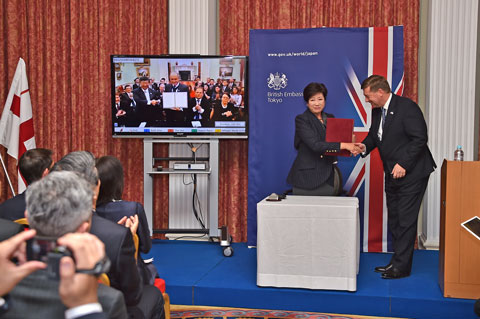
MoU on cooperation and exchange signed with the City of London
On December 4, a Memorandum of Understanding (MoU) was inked between the Tokyo Metropolitan Government (TMG) and the City of London Corporation—the financial heart of Britain—at a ceremony held at the official residence of the British Ambassador to Japan. The MoU was signed as part of the TMG’s “Global Financial City: Tokyo” initiative announced on November 10. The MoU—through which Tokyo and London agreed to collaborate on such matters as financial events, financial education programs, and green finance—marked the first time for the TMG to conclude an agreement in the financial area.
December 4, 2017
December 4, 2017
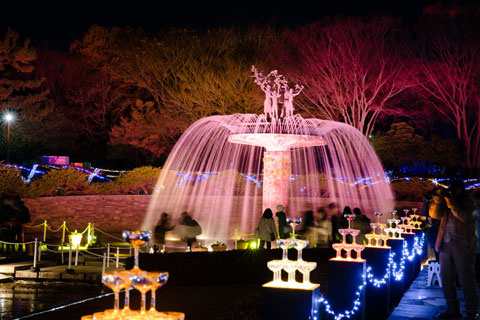
Showa Kinen Park Winter Vista Illumination
On December 11, the Winter Vista Illumination was held at Showa Kinen Park. Every year, Showa Kinen Park puts together the illumination event around various themes, and the main theme for 2017 was the “four seasons of the park.” The “Champaign Glass Tree” decorated with about 15,000 lit-up glasses and other theme-based illuminations made for a colorful nighttime vista.
December 11, 2017
December 11, 2017

Celebrating the public debut of giant panda cub Xiang Xiang
On December 18, a ceremony to celebrate the public display of giant panda cub Xiang Xiang, born on June 12, was held at Ueno Zoo, on the eve of her public debut on December 19.
The giant panda baby, weighing only 147 grams when she was born, has grown to more than 12 kilograms in six months.
December 18, 2017
December 18, 2017
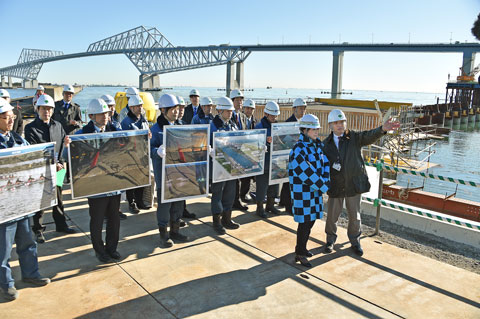
Governor visits scheduled venues for the Olympic and Paralympic Games
On December 27, Governor Koike visited the planned sites of the Tokyo 2020 Games to check on the progress of construction. She first visited the Sea Forest Waterway (Rowing and Canoe (Sprint)) (Aomi, Koto-ku), followed by the Olympic BMX Course (Cycling (BMX Freestyle and BMX Racing) and Skateboarding) in the Ariake-kita area, Ariake Arena (Volleyball and Wheelchair Basketball) (both in Ariake, Koto-ku), the Olympic Aquatics Centre (Aquatics) (Tatsumi, Koto-ku), and the Canoe Slalom Course (Canoe (Slalom)) (Rinkai-cho, Edogawa-ku).
December 27, 2017
December 27, 2017